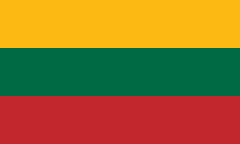GENERAL PLANNED CONTENT
of the Interdisciplinary Training on the Usage of Software Tools for Modern Product Development Processes
- Introduction
- Theoretical characterization of software tools in mechanical, civil and material sciences
- Characterization of software tools in mechanical engineering.
- Characterization of software tools in civil engineering. Digital tools supporting the process of designing and implementing construction investments using CAx. The perspective of BIM technology.
- Characterization of software tools in material science.
- Basics of 3D modelling -Requirements for the designed product
- The range and features of three-dimensional modelling systems.
- Basic principles of three-dimensional modelling and practical application examples.
- Creation and capabilities of realistic 3D models.
- Design for manufacturing and assembly
- Fundamentals of design for manufacturing and assembly.
- Design for conventional processes.
- Design for additive manufacturing.
- Development of interdisciplinary exercises for students
- Exercise 1 – application of CAD (computer-aided design) modelling in product development of civil and mechanical engineering parts. Modelling a typical steel civil structure.
- Exercise 2 – application of CAE (computer-aided engineering) with FEM (finite element method) in mechanical and civil structures. Optimization of structure elements and their connections.
- Exercise 3 – application of CAD in the product development focused on serial manufacturing.
- Exercise 4 – application of software in selection, characterization and modelling of materials for mechanical and civil engineering applications.
- Exercise 5 – generative product design or integration of quality assurance tool into modern product development process.
- Interactive tests and conclusions.
TENTATIVE SCHEDULE
of the Interdisciplinary Training on the Usage of Software Tools for Modern Product Development Processes
ON-LINE ONLY CLASSES (19/01/2026 - 23/01/2026)
MONDAY: Introduyction and summary of materials supporting theory. Application of CAD (computer-aided design) modelling in product development of civil and mechanical engineering parts. 19/01/2026; 16:00 CET
TUESDAY: Application of CAE (computer-aided engineering) with FEM (finite element method) in mechanical and civil structures. Optimization of structure elements and their connections. 20/01/2026; 16:00 CET
WEDNESDAY: Application of CAD in the product development focused on serial and additive manufacturing. 21/01/2026; 16:00 CET
THURSDAY: Application of software in selection, characterization and modelling of materials for mechanical and civil engineering applications. 22/01/2026; 16:00 CET
FRIDAY: Generative product design or integration of quality assurance tool into modern product development process. 23/01/2026; 16:00 CET
Arrangements:
1. Training consists of self study of materials before the practical part and obligatory participation in the classes between 19th and 23rd of January 2026. Morover, teachers will be available to answer the questions after the practical part. Practical part shall be completed till ~18:15 everyday.
2. Materials for students (theory supporting the practical part) will be shared by partner coordinators one week before the practical part of the training.
3. Learning platform link will be shared with students also one week before the practical part of the training.
Organizer reserve the right to change the training details. These changes will be announced to participants.
Please contact your teachers for more details:
Rzeszów University of Technology Students: rwdowik@prz.edu.pl
Kaunas University of Technology Students: regita.bendikiene@ktu.lt
University of Oviedo Students: gvr@uniovi.es





